Many people were involved with the establishment of South Australia. This listing profiles the men and women aboard the first nine ships of 1836 as well as those left behind in Britain who were instrumental in establishing the South Australian Colonization Commission and the South Australian Company.
People
Arthur Gliddon
Arthur William Gliddon (1821-1890) was a mere boy by our standards, just fifteen when he set off all alone to South Australia on the Africaine. He had been engaged by John Morphett, who traveled on the…
Boyle Travers Finniss
Boyle Travers Finniss (1807-1893), an assistant surveyor to Colonel William Light, sailed to South Australia on board the Cygnet. Extracts from the diary he kept throughout the voyage are presented…
Captain Collet Barker
Collet Barker arrived in Sydney in 1827 as a captain in the 39th Regiment. At Charles Sturt’s urging he explored the lower reaches of the River Murray in 1831, searching for another Murray outlet.
Captain George Martin
George Martin (1778 – 1842) was born in England. He married Mary Brett in 1817 when he was 39 and she was 22. By 1835 Mary had given birth to eleven children, three of whom did not survive past infancy.
Captain John Finlay Duff
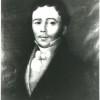
The master mariner John Finlay Duff commanded the Africaine on its 1836 voyage to South Australia. Duff was born on 1 April 1799 in Dundee, Scotland. His mother’s maiden name was Finlay (Duff’s second given name) and her father and grandfather were Dundee shipmasters.
Captain John Jones
John Jones, captain of the schooner Henry, visited Kangaroo Island and surrounding areas on several occasions from Launceston, Tasmania. In 1834 he noted a ‘fine harbour’ on the mainland with an island in the entrance and an anchorage inside.
Captain John Nelson
Captain John Nelson was master of the Emma in 1836. We have been unable to discover anything else about his life or career, and would be grateful for any information about him that readers can supply.
Captain John Rolls
Apart from the fact that he was master of the Cygnet in 1836, we have been unable to discover anything about the early life or career of Captain John Rolls. We are grateful to those who responded to a tweet requesting information about him,
Captain Robert Morgan
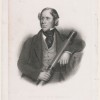
Robert Clark Morgan (1798-1864) was born in Kent, England. He married Mary Dorrington in 1822, when he was 25 and she was 22. In February 1836 they had one surviving child, having lost several soon after birth, and Mary was expecting another.
Captain Robert Ross
Apart from the fact that he was master of the Lady Mary Pelham in 1836, we have been unable to discover anything about the early life or career of Captain Robert Ross. We have consulted British Census records but cannot identify a likely individual from this source.
Captain Thomas Lipson
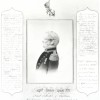
Captain Thomas Lipson (1783-1863) was born in Dartmouth, England. An English Naval Officer, he married Elizabeth Emma Fooks (1791-1880) on 30 July 1812. Thomas and Elizabeth emigrated to South Australia aboard the Cygnet with their six children Thomas, Eliza, Mary, Emma, Berry and Louisa in 1836.
Captain Whiteman Freeman
Captain Whiteman Freeman was a commercial seafarer. He had been master of the ship Edward Lombe and taken it from London to Sydney in 1832. He traded on the Australian coast sailing from Sydney to Van Diemen’s Land and the Swan River (later to become Tasmania and Western Australia) before leaving Sydney in April 1833 bound for London.
Charles Howard
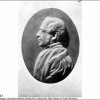
Charles Beaumont Howard was born in Dublin, Ireland, in 1807, and studied at Trinity College, Dublin. After being ordained a deacon in the Church of England, he moved to England and served as curate in Chester and Yorkshire.
Charles James Nantes
Charles James Nantes (1817 – 1877) was born in Abbotsham, Devon, England to Henry Nantes and his third wife Patty Eliza Benson. Charles was the fifth of seven children. In 1836, at the age of 19 Charles Nantes was appointed clerk to Colonial Secretary Robert Gouger and sailed with him to South Australia aboard the Africaine.
Charles Mann
Charles Mann was a London solicitor with an interest in the colonization movement. In September 1835 he presented a paper to a meeting of the South Australian Literary and Scientific Association defending Edward Gibbon Wakefield’s plan for systematic colonization.
Charles S Hare
Little is known of the early life and career of Charles Simeon Hare (1808 – 1882). He was born in America in 1808 and emigrated to England sometime before 1836. In London on 10 March 1836 he offered his services as personal secretary to John Morphett for a period of two years.
Colonel William Light

William Light (1786-1839) was born 27 April 1786 in Malaya. He was the second son of Captain Francis Light and Martinha Rozells, a Portuguese Eurasian. William Light spent his early years in Penang, but at age six was sent to England to be educated by his father’s friend, Charles Doughty. In 1799, at the age of 14, Light entered the Royal Navy as a ‘volunteer boy’, and left as a midshipman two years later.
Cornelius Birdseye
A full account of Cornelius Birdseye’s life is not available and we must make do with the snippets of information that have survived. Birdseye was the overseer of the South Australian Company’s flocks and herds and he sailed to South Australia in 1836 on the Lady Mary Pelham.
Dr Charles George Everard
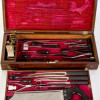
Charles George Everard was born in Marshfield, Gloucestershire, England, and baptised at St Michael’s Church in Winterbourne on 29 August 1794. On 17 February 1817, Charles married Catherine Russell.
Dr John Woodforde

John Woodforde was born in Somerset, England in 1810, to Harriet and Dr John Woodforde, a doctor in general practice. He gained his medical qualifications in 1832 and 1833, and was engaged as surgeon on the Rapid.
Edward Gibbon Wakefield

Edward Gibbon Wakefield is generally credited with first developing the concept of ‘systematic colonization’ that underpinned the development of South Australia.
George Fife Angas
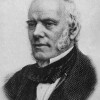
George Fife Angas (1789-1879) was a wealthy merchant, banker and landowner, who played a significant role in the foundation of South Australia.
George Glansford
George Glansford was a crew member of the Duke of York. He was from Barking, in Essex, England, and appears to have come from a family of mariners. Little is known about his life before he sailed for South Australia.
George Stevenson
George Stevenson was born on 13 April 1799 in the Scottish-English border town of Berwick-upon-Tweed. By the time he was 31 he had been to sea in an East Indiaman, studied medicine in Scotland, worked in Canada and visited Central America and the West Indies.
George Strickland Kingston
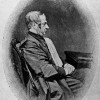
ir George Strickland Kingston (1807-1880) was born and educated as a civil engineer in Ireland before pursuing a career in England. Kingston married Henrietta (Harriet) Ann McDonough in London in 1829. By Christmas 1830 they were living in Birmingham where Kingston gained employment as an engineer at the Birmingham Waterworks.
Governor John Hindmarsh

Sir John Hindmarsh (1785-1860) was the first Governor of South Australia. A naval officer through and through, John Hindmarsh began his career on HMS Bellerophon at the age of fourteen and served in Nelson’s Navy in the Mediterranean and East Indies.
Harriet Gouger
Harriet Gouger was born Harriet Jackson in about 1805. She married Robert Gouger on 22 October 1835, in London. Less than a year later they departed for South Australia on the Africaine, accompanied by two servants. Robert, a tireless advocate for the foundation of South Australia, had been appointed the new colony’s first Colonial Secretary.
Henry Wallan
Known by a variety of names, Henry (or Robert) Wallan/Wallen/Warland/Whalley is an elusive character. He was born about 1794, and appears to have arrived in Australia in 1815 as a crew member on a convict ship and worked in Australian waters before going sealing in New Zealand.
James Hurtle Fisher
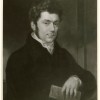
James Hurtle Fisher was a London solicitor active in the colonizing movement. He became a member of the South Australian Building Committee in September 1835 and in July 1836 he was appointed Registrar and Resident Commissioner for the new colony.
John Brown

John Brown (c.1801 – 1879) was born in England. He attended Mill Hill School from 1812 to 1815 and at the age of 30 was a registered voter in the city of London. In 1833 he was an importer of wines and spirits at St Mary at Hill.
John Day
John (also known as William) Day has left few traces. He was born in about 1790, and died on 13 June 1860 at South Richmond.
John Edward Pollard
John Edward Pollard (1815 – 1865) was born in Herefordshire, England. Pollard emigrated to South Australia as a labourer in 1836, with his wife, aboard the Africaine.
John Michael Skipper

John Michael Skipper was born on 12 July 1815 in Norwich, Norfolk, England, to John Skipper (a solicitor) and his wife Jane, nee Stark. J M Skipper started studying towards law, but left his studies to join the Sherbourne, an East India Company ship bound for Calcutta.
John Morphett
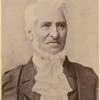
John Morphett (1809-1892) was the son of a London solicitor. On leaving school at the age of 16 he worked in a commercial firm in London, before joining another firm in Alexandria, Egypt.
John Pirie journal writer
An unknown hand kept a journal of the voyage of the John Pirie. The surviving journal contains entries from 1 March 1836 (eight days after the ship departed from London) to 11 February 1837. The journal is overwhelmingly concerned with the welfare of the livestock on board and on land, suggesting that the writer was employed in animal husbandry.
Joseph and James Jones
Joseph Jones, a labourer, was born in about 1815 in Acton, England, and travelled to South Australia with his brother James on the John Pirie. We know little about the brothers, although records indicate that Joseph married Harriet Wallace in 1836 – but not whether she was also aboard the John Pirie. Joseph and Harriet went on
Maria Gandy
William Light was not free to marry Maria Gandy, as he was still married to his second wife Mary when he left for South Australia. Light and his wife had been living separate lives for several years. Maria travelled to South Australia with her brothers William and Edward on board the Rapid, where she was one of only two women.
Mary Thomas

Mary Thomas was clearly a redoubtable woman. She was 49 years old when she, her husband Robert and their five children sold all their belongings in England and embarked for South Australia. Mary travelled on the Africaine with four of her children, while the elder son, Robert George, an apprentice in Colonel Light’s survey team, travelled on the Rapid.
Matthew Flinders
Matthew Flinders commanded HMS Investigator and charted the coast of the continent that was then known as New Holland from April 1801 to June 1803. His expedition produced the first complete chart of the continent and the first views of the southern coast.
Mrs Nelson
Wife of Captain John Nelson, master of the Emma in 1836. We have been unable to discover anything else about the life of Mrs Nelson, and would be grateful for any information about her that readers can supply.
Queen Adelaide
Queen Adelaide was born on the 13th of August, 1792. The eldest daughter of the Duke of Saxe-Meiningen, her home was his small, but liberal and progressive German Duchy. In 1818, at the age of 25, Adelaide married the much older Duke of Clarence a possible heir to the English crown. Although the nature of her marriage was
Robert Gouger
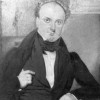
Robert Gouger (1802-1846) was one of the first and most influential advocates for South Australia. The son of a wealthy London merchant, he preferred worthy causes to trade and was often short of money as a result.
Robert Torrens
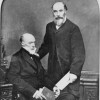
Robert Torrens (1780-1864) was active in the South Australian Association and later made Chairman of the South Australian Colonization Commission.
Rosina Ferguson
Rosina Fergsuon was a Scot, born Rosina Forsyth in Dumfriesshire in 1812. She was brought up a Presbyterian and her piety is evident in her letter of 12 July 1836, as is her love for her extended family and her anxiety at leaving them to emigrate to South Australia.
Samuel Stephens
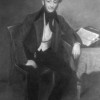
Samuel Stephens (1808 – 1840) was the first colonial manager of the South Australian Company. He sailed for the Province on the Duke of York in February 1836.
The Beare family
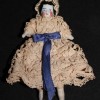
Thomas Hudson Beare was employed by the South Australian Company as second in command and Superintendent of Buildings and Labourers.
The Chandler family
Charles and Elizabeth Chandler and four children were among those sailing on the John Pirie. We know a little about the lives of the family before they sailed: Charles, an agricultural labourer, was born in 1804 and probably married Elizabeth in the mid-1820s.
The Hallett family
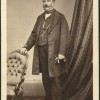
John Hallett was born on 30 August 1804 at Woodford in Essex, England. Hallett was ten years older than his wife Maria (nee King), whom he married about 1832. John and Maria sailed on the Africaine in 1836 with their three young sons, John, Richard and Henry. Henry was profoundly deaf.
The Powell family
Five members of the Powell family sailed to South Australia in 1836. Charles Powell, his wife and child, his brother James and sister Mary Ann all sailed on the John Pirie, while another seemingly unrelated Charles Bendin Powell sailed
William Malcolm
Little is known of William Malcolm, but it appears that he was related to the brothers, Sir James and Sir Pulteney Malcolm, both of whom had interests in South Australia.
William Pullen
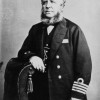
William John Pullen was born in about 1813 and spent some years in the navy, before resigning and joining the South Australian Company as an officer and assistant-surveyor. He sailed on the Rapid with Colonel William Light.
Young Bingham Hutchinson
Young Bingham Hutchinson was born on 14 August 1806 in Richmond, Surrey, England, to Andrew and Anne Hutchinson. After serving as a lieutenant in the Royal Navy, he emigrated to South Australia in 1836 on the Buffalo.
Share this page:

Comments or Questions:
13 Responses to “People”